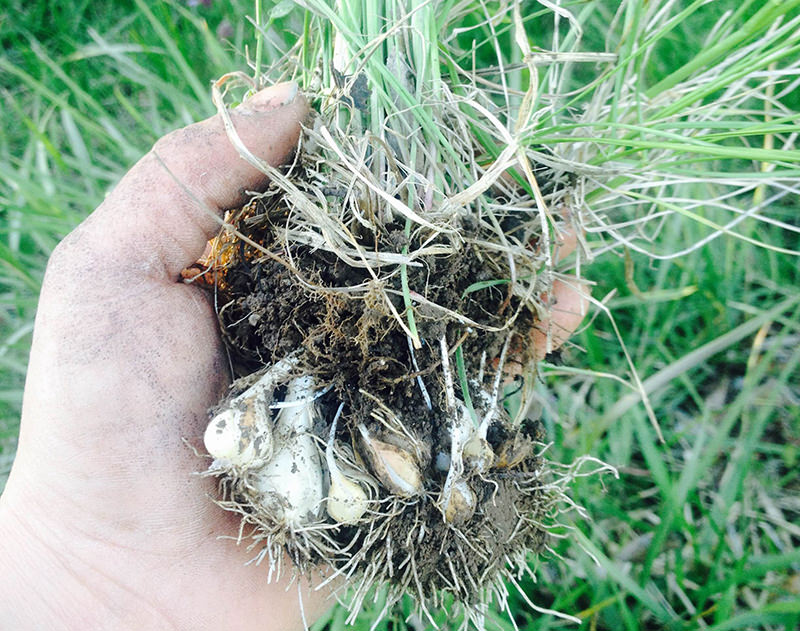
If it looks like your lawn is covered in chives, you may have a delicious and free source of wild garlic. Here are tips for you to become an expert forager of this spring treat.
Smell It
The thin green stalks and white bulbs must smell like onions or garlic. If there’s no smell at all, you may have found a patch of Star of Bethlehem, which is a toxic member of the lily family. If you aren’t sure, leave it be. You can also wait to see what flowers emerge from the bunch to help identify the plant for next year.
Observe The Plant

Leaves
Many foraging and lawn-care sites note that wild garlic leaves are hollow, while wild onion leaves are flat and solid. Both wild onions and wild garlic are edible, so this identification feature is less important than the smell test mentioned above. If you live in a rural area near a forested river bottom and find a plant that smells like garlic with big, wide leaves, you have likely found the wild delicacy known as the ramp. We have found that wild garlic is much more abundant in our area, so we think that wild garlic is a more sustainable alternative to the ramp. The leaves of wild onion, garlic and ramps are all edible but may get tough.
Bulbs
Wild garlic may have tiny bulblets attached to the main bulb at the base of the stalk and a fibrous or papery coating outside of the bulb, similar to domesticated bulbs of garlic.
Flowers
A small ball of tiny bulbs with purple flowers indicates wild garlic, while wild onions may have small white flower heads. Star of Bethlehem also have white flowers, so the smell test is still very important. Wild garlic flowers are edible as well, although be sure to leave some so that the plant can re-seed new bunches.
How To Harvest
As with any other foraging, be sure to leave some plants for future growth. We found that when we pulled up the entire clump of wild garlic, we ripped out all of the little bulblets, roots, and soil as well. When we carefully pulled out the wild garlic bulbs individually, the tiny bulblets next to the main bulbs were left behind to grow for next year. As a bonus, the bulbs had less dirt on them when they were pulled out one by one, so they were much easier to clean before cooking.
Eating Wild Garlic
The flavorful bulbs of wild garlic are excellent sliced thin and added to any recipe calling for garlic, scallions or onions. Try fried in batter, grilled, pickled or even fermented with salt. We recently enjoyed wild garlic bulbs sliced thin and mixed into a Korean-style dipping sauce with soy sauce, sugar, sesame oil and chili paste. Yum!




